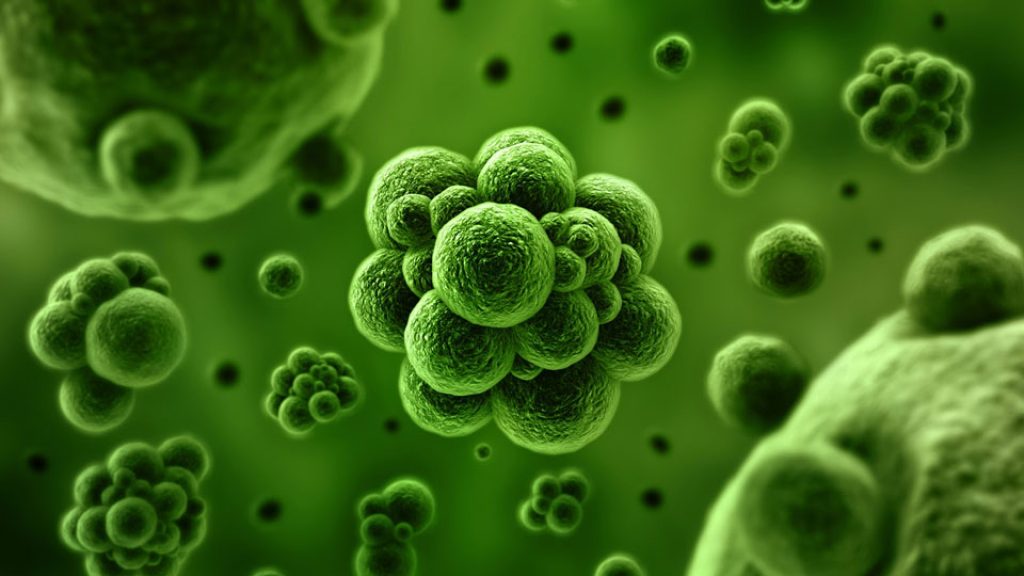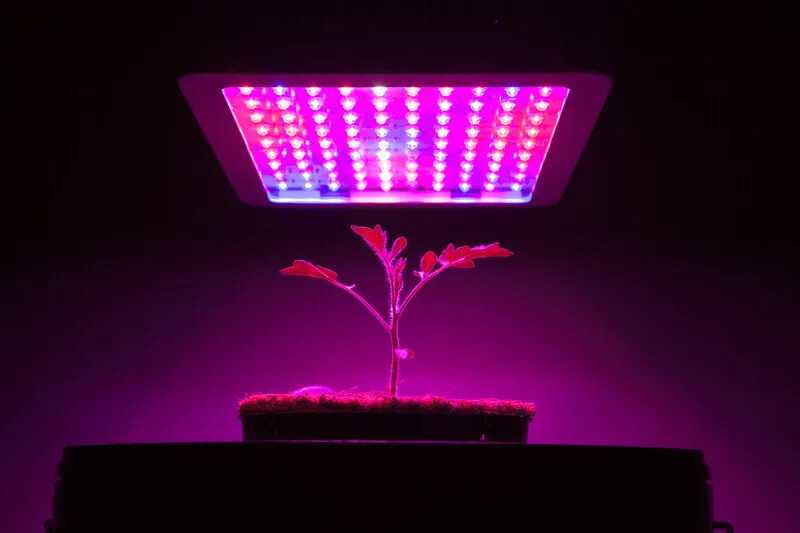
Are you looking for a revolutionary way to enhance your plant growth and nutrient uptake? Look no further than hydroponic beneficial bacteria! These tiny powerhouses are taking the gardening world by storm, providing a natural and effective solution for maximizing plant health and yields. Hydroponic systems eliminate the need for soil, relying instead on water and nutrient solutions to deliver essential elements to the plants. However, without beneficial bacteria, these systems can struggle to reach their full potential. Hydroponic beneficial bacteria work in symbiosis with plants, colonizing their root systems and aiding in nutrient absorption, disease prevention, and overall plant health. In this article, we will explore the incredible benefits of using hydroponic beneficial bacteria and how they can supercharge your plants’ growth and nutrient uptake. Whether you are a seasoned hydroponic enthusiast or just starting your journey, this is a must-read for anyone looking to maximize their gardening success. Get ready to unlock the power of hydroponic beneficial bacteria and take your plants to new heights!
Understanding the role of beneficial bacteria in hydroponic systems
Hydroponic systems offer a controlled and efficient way to grow plants, but they lack the natural microbial diversity found in soil. This is where beneficial bacteria come into play. These microorganisms, commonly referred to as plant growth-promoting rhizobacteria (PGPR), form a mutually beneficial relationship with plants.

When introduced into a hydroponic system, beneficial bacteria colonize the roots, creating a biofilm that protects against harmful pathogens. Additionally, they produce enzymes that break down organic matter, making it more accessible to the plants. This enhances nutrient uptake, allowing plants to absorb vital elements such as nitrogen, phosphorus, and potassium more efficiently.
The presence of beneficial bacteria also helps plants to produce growth hormones, such as auxins and cytokinins. These hormones regulate various physiological processes, including root development, leaf expansion, and flowering. By stimulating hormone production, beneficial bacteria can promote overall plant growth and development.
Here are some additional points you can consider:
- Symbiotic Relationships: Some beneficial bacteria can establish symbiotic relationships with plants. For example, nitrogen-fixing bacteria can convert atmospheric nitrogen into a form that plants can use.
- Stress Tolerance: Some beneficial bacteria help plants cope with environmental stresses like drought, salinity, or extreme temperatures.
- Suppressing Diseases: Beneficial bacteria can suppress the growth of pathogenic microorganisms through competition, production of antimicrobial compounds, and by inducing systemic resistance in the host plant.
- Enhancing Mineral Uptake: In addition to the macronutrients mentioned (nitrogen, phosphorus, and potassium), beneficial bacteria can also enhance the uptake of micronutrients, such as iron, zinc, and manganese.
- Biocontrol Agents: Some beneficial bacteria act as biocontrol agents that can reduce or eliminate the need for chemical pesticides.
- Role in pH stabilization: Certain beneficial bacteria can help stabilize the pH of the hydroponic solution, which is crucial for nutrient availability and uptake.
- Detoxification: Some bacteria play a role in detoxifying harmful compounds, whether they are introduced by mistake or as by-products of plant metabolism.
Including these points would provide a more comprehensive understanding of the multifaceted role that beneficial bacteria play in hydroponic systems.
Hydroponic Beneficial Bacteria Benefits
The use of hydroponic beneficial bacteria offers a wide range of benefits for both hobbyist gardeners and commercial growers alike. One of the primary advantages is improved nutrient uptake. By colonizing the root system, beneficial bacteria enhance the plant’s ability to absorb essential nutrients, resulting in healthier and more vigorous growth.

Furthermore, beneficial bacteria play a critical role in disease prevention. They compete with harmful pathogens for space and resources, effectively reducing the risk of plant infections and diseases. This natural defense mechanism can significantly reduce the need for chemical pesticides and fungicides, making hydroponic systems more environmentally friendly.
In addition to nutrient uptake and disease prevention, beneficial bacteria also contribute to improved plant resilience. They help plants cope with various stressors, including temperature fluctuations, drought, and nutrient imbalances. By strengthening the plant’s natural defense mechanisms, beneficial bacteria ensure optimal performance even under challenging conditions.
Lastly, the use of beneficial bacteria in hydroponics can lead to higher yields and better quality crops. By maximizing nutrient uptake and plant health, growers can expect increased productivity and improved overall crop performance. Whether you are growing herbs, leafy greens, or even fruiting plants, incorporating beneficial bacteria into your hydroponic system can make a noticeable difference.
Here is few more points to make it even more comprehensive:
- Stabilization of pH Levels: Beneficial bacteria can help maintain the stability of the pH level in the hydroponic system. This is crucial since drastic changes in pH can affect nutrient availability and plant health.
- Minimizing Nutrient Lockout: Beneficial bacteria can prevent nutrient lockout, a common issue in hydroponic systems where plants cannot access the nutrients in the solution due to factors such as pH imbalance or over-fertilization.
- Enhancing Root Development: Certain bacteria can stimulate root growth, leading to a larger root mass and more efficient nutrient and water uptake.
- Sustainable Farming: The use of beneficial bacteria minimizes the need for chemical fertilizers and pesticides, promoting a more sustainable form of farming.
- Bioremediation: Some beneficial bacteria play a role in detoxifying harmful compounds in the system, improving the overall health and safety of the hydroponic setup.
- Improved Flavor and Nutrition: The use of beneficial bacteria can enhance the flavor and nutritional content of the crops. Some studies suggest that crops grown with beneficial microbes have higher levels of vitamins and antioxidants.
Overall, the incorporation of beneficial bacteria into hydroponic systems can significantly enhance the quality, yield, and sustainability of the cultivation process.
How beneficial bacteria enhance plant growth and nutrient uptake
The ability of beneficial bacteria to enhance plant growth and nutrient uptake can be attributed to several key mechanisms. First and foremost, these bacteria produce enzymes that break down organic matter in the root zone. This process, known as mineralization, releases essential nutrients from organic compounds, making them readily available for plant absorption.
Beneficial bacteria also play a crucial role in nutrient solubilization. They produce organic acids and chelating agents that help dissolve insoluble nutrients in the hydroponic solution. This solubilization process increases nutrient availability, ensuring plants have access to the elements they need for optimal growth.
Furthermore, beneficial bacteria can directly influence plant hormone levels. They produce auxins, which promote root growth, and cytokinins, which stimulate cell division and shoot development. By boosting hormone production, beneficial bacteria encourage robust root systems and overall plant vigor.
Another way beneficial bacteria enhance plant growth is by suppressing harmful pathogens. They release antimicrobial compounds and enzymes that inhibit the growth of pathogenic bacteria and fungi. This protective effect helps maintain a healthy root environment, reducing the risk of root rot and other detrimental diseases.
Lastly, beneficial bacteria have the ability to fix atmospheric nitrogen. Some species, such as Azospirillum and Azotobacter, can convert atmospheric nitrogen into a form that plants can utilize. This nitrogen fixation process provides an additional source of nitrogen, reducing the need for synthetic fertilizers and promoting sustainable agriculture.
We will add a couple of points to help round out the discussion:
- Siderophore Production: Many beneficial bacteria produce molecules called siderophores that bind to iron in the growing medium, making it more available to plants. Iron is an essential micro-nutrient that plays a role in many plant functions including photosynthesis and respiration.
- Phosphorus Solubilization: Certain beneficial bacteria species are capable of converting insoluble phosphorus in the system into a form that plants can easily take up. Phosphorus is a crucial nutrient for plants that contributes to energy transfer and other key metabolic processes.
- Inducing Systemic Resistance: Some beneficial bacteria can trigger systemic resistance in plants, effectively making the plants more resistant to diseases. This is a form of “immunity” that plants acquire, which prepares them to resist future pathogen attacks.
- Stress Tolerance: Beneficial bacteria can improve plant tolerance to environmental stress conditions, such as drought, salinity, and heavy metals. This is particularly important in hydroponic systems which can be subject to rapid changes in conditions.
- Improved Soil Structure in Hybrid Systems: In certain hybrid hydroponic systems that use substrates, beneficial bacteria can improve soil structure, enhancing water movement and root penetration.
These additional mechanisms further illustrate how beneficial bacteria are instrumental in optimizing plant health and nutrient uptake in hydroponic systems.
Types of beneficial bacteria commonly used in hydroponics
There are several types of beneficial bacteria commonly used in hydroponics, each with its unique characteristics and benefits. One of the most well-known and widely used species is Bacillus subtilis. This bacterium produces a range of enzymes that aid in nutrient solubilization and disease suppression. It is particularly effective against fungal pathogens, making it a valuable addition to any hydroponic system.
Another popular beneficial bacterium is Pseudomonas fluorescens. This versatile species offers a wide range of benefits, including nutrient solubilization, disease suppression, and the production of growth-promoting substances. Pseudomonas fluorescens is known for its ability to protect plants against soil-borne pathogens, making it an excellent choice for hydroponic systems.
Lactobacillus species are also commonly used in hydroponics. These beneficial bacteria produce lactic acid, which helps maintain a slightly acidic pH in the root zone. This acidic environment inhibits the growth of harmful pathogens, creating a favorable environment for plant growth.
In addition to these species, many other beneficial bacteria can be used in hydroponics, such as Azospirillum, Rhizobium, and Streptomyces. The choice of beneficial bacteria depends on the specific needs of your plants and the conditions of your hydroponic system. It is recommended to consult with a knowledgeable supplier or expert to determine the most suitable bacteria for your setup.
We covers the main types of beneficial bacteria commonly used in hydroponics very well. We will add a few more to the list:
- Bacillus megaterium: Known for its ability to solubilize phosphorus, Bacillus megaterium can help to ensure that plants have access to this essential nutrient.
- Azotobacter chroococcum: This nitrogen-fixing bacterium is beneficial for plants in nutrient-poor conditions. It can convert atmospheric nitrogen into a form that plants can use.
- Bacillus amyloliquefaciens: This beneficial bacterium is known for its strong disease-suppressive effects, specifically against bacterial and fungal pathogens. It also produces enzymes that help to break down organic matter, enhancing nutrient availability.
- Bacillus licheniformis: Bacillus licheniformis has been found to produce several enzymes which help to break down organic materials, enabling easier nutrient uptake by plants. It is also used for its antifungal properties.
- Bacillus pumilus: Bacillus pumilus is valued for its ability to induce systemic resistance in plants, effectively “immunizing” plants against future pathogen attacks.
- Trichoderma: Though technically a fungus rather than bacteria, Trichoderma species are often used in hydroponic systems due to their robust plant growth-promoting properties and effectiveness in suppressing a wide range of pathogens.
The beneficial bacteria (and fungi) you choose will largely depend on the specific needs of your hydroponic system and the plants you’re growing. Using a blend of different beneficial microorganisms can provide a wide array of benefits to promote healthy plant growth and high yields.
Implementing beneficial bacteria in your hydroponic system
Implementing beneficial bacteria in your hydroponic system is a relatively straightforward process. One common method is to use a liquid inoculant that contains a high concentration of beneficial bacteria. This inoculant can be added directly to the nutrient solution, ensuring even distribution of the bacteria throughout the system.
Another approach is to use a root dip or root soak technique. This involves dipping the plant’s roots into a solution containing beneficial bacteria before transplanting them into the hydroponic system. This method ensures that the bacteria establish a strong presence in the root zone right from the start.
It is important to note that beneficial bacteria require specific environmental conditions to thrive. They prefer slightly acidic pH levels, typically ranging from 5.5 to 6.5. Additionally, they require adequate oxygen levels, as oxygen is essential for their growth and metabolic processes. It is crucial to maintain proper aeration and ensure sufficient dissolved oxygen levels in the hydroponic solution.
Regular monitoring is also essential to ensure the beneficial bacteria are thriving in the system. Monitoring pH levels, nutrient concentrations, and overall plant health can help identify any issues early on. Adjustments can then be made to optimize conditions and maximize the benefits of beneficial bacteria.
Factors to consider when choosing beneficial bacteria products
When choosing beneficial bacteria products for your hydroponic system, several factors should be considered. First and foremost, look for products that contain well-researched and scientifically validated strains of bacteria. These strains have been proven to provide the desired benefits and are more likely to deliver consistent results.
It is also important to consider the shelf life and storage requirements of the bacteria products. Some beneficial bacteria are more sensitive to temperature and light, requiring refrigeration or specific storage conditions. Ensuring proper storage and handling can help maintain the viability and effectiveness of the bacteria.
Furthermore, consider the compatibility of the beneficial bacteria with your chosen nutrient solution and other additives. Some bacteria may interact with certain nutrients or additives, affecting their efficacy. It is advisable to consult with the manufacturer or supplier to ensure compatibility and avoid any potential issues.
Tips for maintaining a healthy balance of beneficial bacteria in hydroponics
Maintaining a healthy balance of beneficial bacteria in your hydroponic system is vital for optimal plant growth and performance. Here are some tips to help you maintain a thriving bacterial population:
1. Regularly monitor pH levels and nutrient concentrations. Beneficial bacteria prefer slightly acidic conditions, so maintaining the appropriate pH range is crucial. Additionally, nutrient imbalances can negatively impact bacterial growth, so monitoring and adjusting nutrient concentrations as needed is essential.
2. Provide adequate oxygenation. Beneficial bacteria require oxygen to carry out their metabolic processes. Ensure proper aeration and consider using supplemental oxygenation methods, such as air stones or diffusers, to maintain optimal dissolved oxygen levels.
3. Avoid over-sanitizing the system. While cleanliness is important, over-sanitizing the hydroponic system can disrupt the beneficial bacteria population. Use mild cleaning agents and avoid harsh chemicals that can kill off the bacteria. Regularly cleaning and sterilizing equipment can help maintain a healthy balance.
4. Avoid excessive use of chemical pesticides and fungicides. Beneficial bacteria play a crucial role in disease prevention. Excessive use of chemical pesticides and fungicides can harm the beneficial bacteria population. Whenever possible, opt for biological control methods and limit the use of chemical interventions.
5. Ensure proper water quality. Beneficial bacteria are sensitive to water quality, particularly chlorine and chloramine. These disinfectants can harm the bacteria. Use a water filter or allow the water to sit overnight to allow chlorine to dissipate before adding it to the hydroponic system.
By following these tips, you can create and maintain an optimal environment for beneficial bacteria to thrive, ensuring maximum benefits for your plants.
Lastly, consider the reputation and customer feedback of the bacteria product. Look for reviews and testimonials from other hydroponic growers who have used the product. Positive feedback and a reputable brand can provide confidence in the effectiveness and quality of the bacteria product.
Case studies and success stories of using Hydroponic Beneficial Bacteria
Numerous case studies and success stories showcase the effectiveness of beneficial bacteria in hydroponics. One such study conducted by researchers at a leading agricultural university demonstrated the positive impact of Bacillus subtilis on tomato plants grown in a hydroponic system. The plants treated with Bacillus subtilis showed increased root development, nutrient uptake, and overall plant health compared to the control group.
Another success story comes from a commercial hydroponic lettuce grower who implemented beneficial bacteria in their system. They reported significant improvements in crop yield, quality, and disease resistance after incorporating beneficial bacteria. The grower also noticed a reduction in the need for chemical interventions, leading to cost savings and more sustainable production practices.
Bacillus amyloliquefaciens in Pepper Plants: A study conducted at the National Chung Hsing University in Taiwan demonstrated the effectiveness of Bacillus amyloliquefaciens in promoting growth and disease resistance in hydroponically grown pepper plants. The researchers found that the bacterium not only promoted growth but also significantly suppressed the occurrence of bacterial wilt disease in the pepper plants.
Azospirillum brasilense in Maize: A study published in the “Journal of Plant Nutrition” found that maize plants inoculated with Azospirillum brasilense in a hydroponic system showed significantly higher growth and nitrogen uptake than non-inoculated plants.
Pseudomonas fluorescens in Strawberry Plants: A commercial strawberry grower in Australia noticed remarkable results after introducing Pseudomonas fluorescens into their hydroponic system. The introduction of these bacteria led to improved root development, increased fruit yield, and resistance to root pathogens.
Multi-strain Bacteria Products in Leafy Greens: A commercial hydroponics producer in the United States reported significant improvements in leafy green production after incorporating multi-strain beneficial bacteria products into their system. They noted improved nutrient uptake, faster growth rates, increased yield, and improved plant health.
These case studies and success stories highlight the tangible benefits of using beneficial bacteria in hydroponics. The positive results observed in various crops and growing environments further support the efficacy of these microorganisms in maximizing plant growth and nutrient uptake.
Conclusion: Embracing the power of beneficial bacteria in hydroponics
Hydroponic beneficial bacteria offer a game-changing solution for enhancing plant growth and nutrient uptake. By harnessing the power of these tiny microorganisms, hydroponic growers can achieve healthier plants, higher yields, and more sustainable production practices.
Understanding the role of beneficial bacteria, the benefits they offer, and how they enhance plant growth and nutrient uptake is crucial for any hydroponic enthusiast. By implementing beneficial bacteria in your hydroponic system and following best practices for maintenance, you can unlock the full potential of your plants and take your gardening success to new heights.
So, whether you are a seasoned hydroponic grower or just starting your journey, don’t miss out on the incredible benefits of hydroponic beneficial bacteria. Embrace the power of these tiny superheroes and watch your plants thrive like never before!






